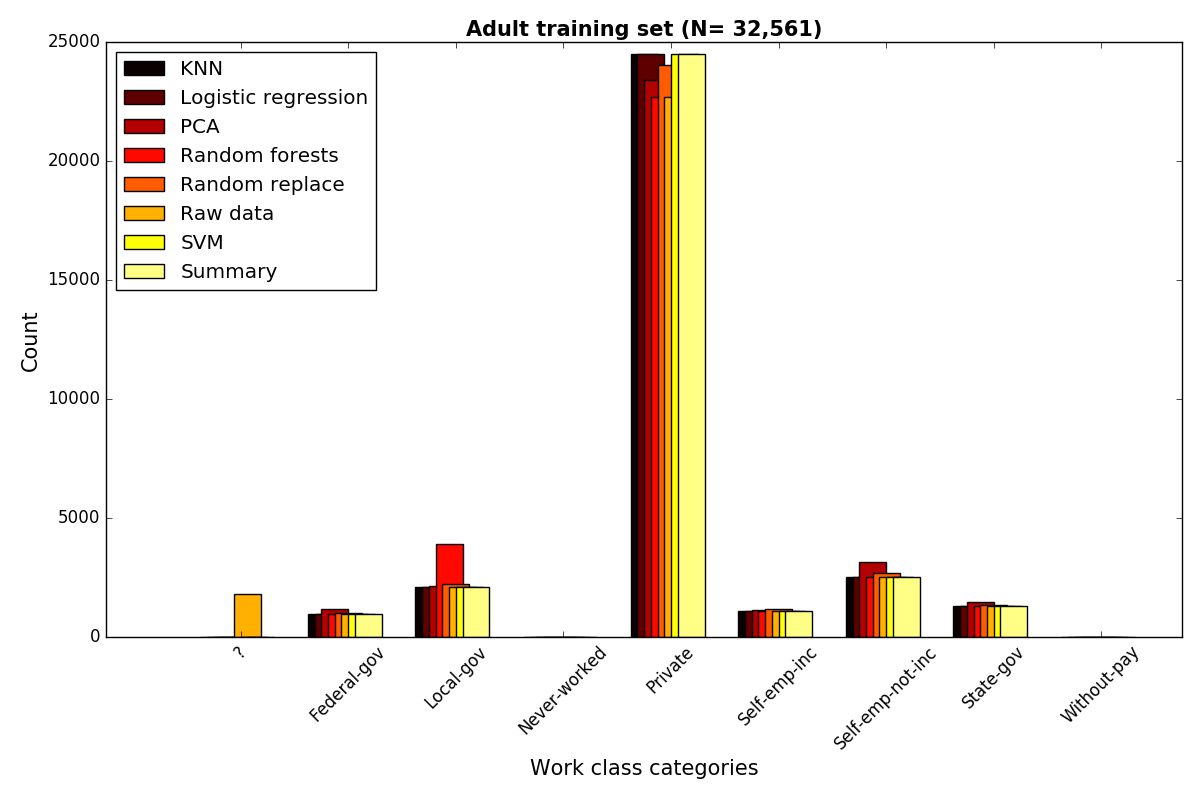This repository is associated with the paper "Missing Data Imputation for Supervised Learning" (arXiv), which empirically evaluates methods for imputing missing categorical data for supervised learning tasks.
Please cite the paper if you use this code for academic research:
@article{poulos2018missing,
title={Missing data imputation for supervised learning},
author={Poulos, Jason and Valle, Rafael},
journal={Applied Artificial Intelligence},
volume={32},
number={2},
pages={186--196},
year={2018},
publisher={Taylor \& Francis}
}
We categorize proposed imputation methods into six groups listed below:
Case substitution One observation with missing data is replaced with another non-sampled obser- vation.
Summary statistic Replace the missing data with the mean, median, or mode of the feature vec- tor. Using a numerical approach directly is not appropriate for nonordinal categorical data.
One-hot Create a binary variable to indicate whether or not a specific feature is missing.
Hot deck and cold deck Compute the K-Nearest Neighbors of the observation with missing data and assign the mode of the K-neighbors to the missing data. algorithm.
Prediction Model Train a prediction model (e.g., random forests) to predict the missing value.
Factor analysis Perform factor analysis (e.g., principal component analysis (PCA)) on the design matrix, project the design matrix onto the first N eigenvectors and replace the missing values by the values that might be given by the projected design matrix.
The figure below shows frequency of job category in the Adult dataset before
and after the imputation techniques above were used.
Code can be found here
Code can be found here

